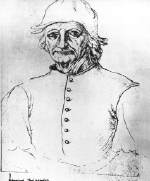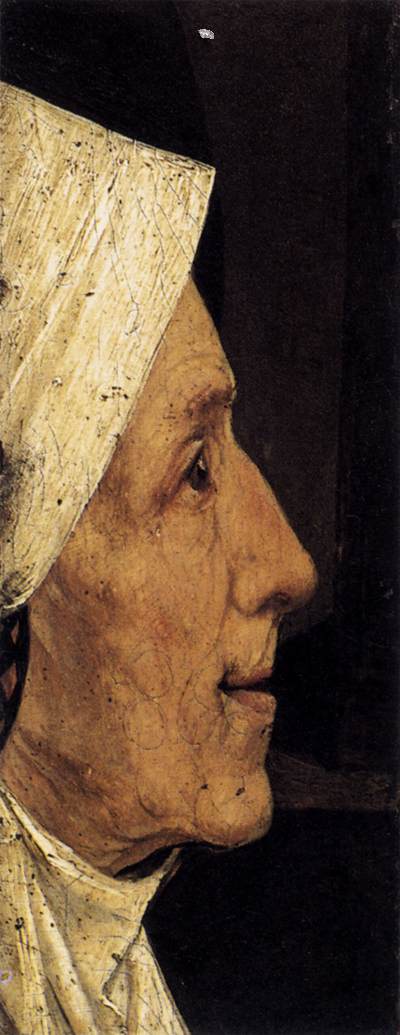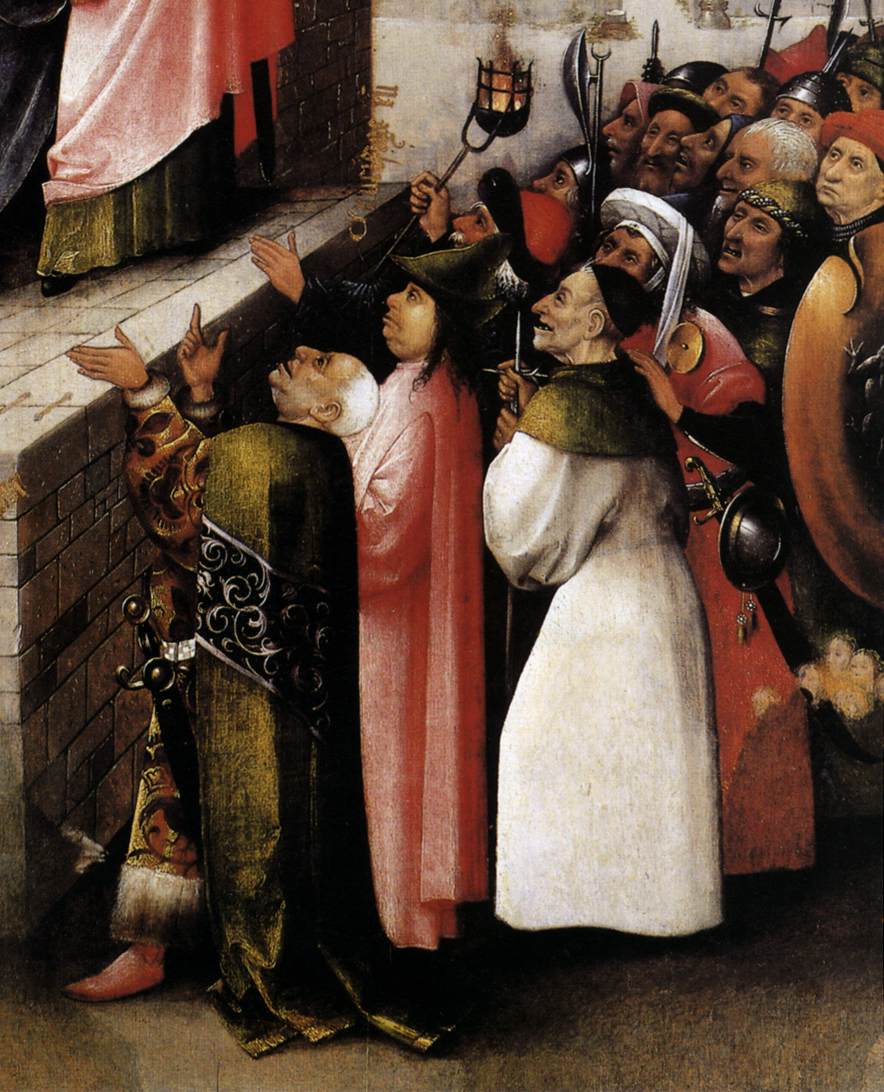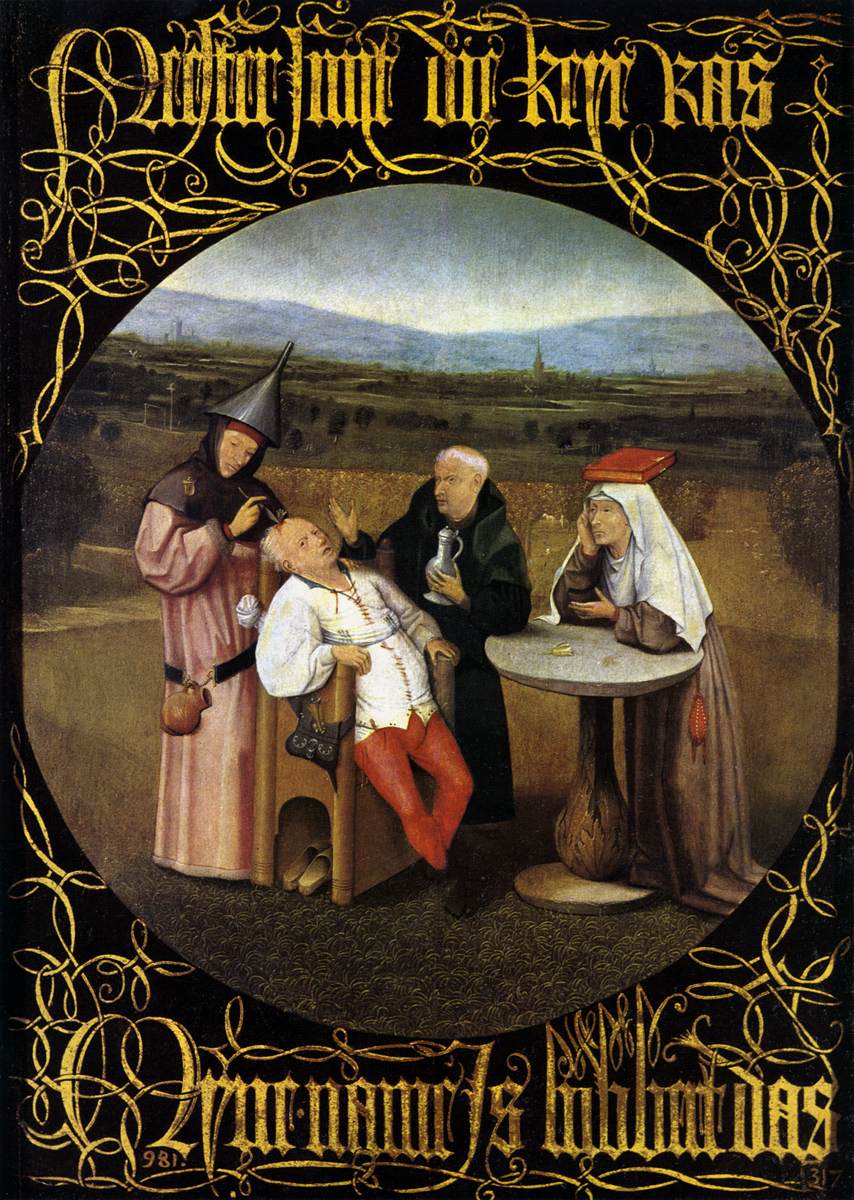Netherlandish painter, named after the town of 's-Hertogenbosch (Bois-le-Duc) in northern Brabant, where he seems to have lived throughout his life. His real name was Jerome van Aken (perhaps indicating family origins in Aachen, Germany). Bosch married well and was successful in his career (although his town was fairly isolated, it was prosperous and culturally stimulating). He was an orthodox Catholic and a prominent member of a local religious brotherhood, but his most characteristic paintings are so bizarre that in the 17th century he was reputed to have been a heretic. About forty genuine examples of Bosch's work survive, but none is dated and no accurate chronology can be made.
Works attributed to his youthful period show an awkwardness in drawing and composition and brushwork somewhat limited in its scope. Such paintings as The Cure of Folly, Crucifixion, The Epiphany, The Seven Deadly Sins, The Marriage at Cana, Ecce Homo, and The Magician are representative of this period. In these early paintings Bosch had begun to depict humanity's vulnerability to the temptation of evil, the deceptive allure of sin, and the obsessive attraction of lust, heresy, and obscenity. In calm and prosaic settings, groups of people exemplify the credulity, ignorance, and absurdities of the human race. However, the imagery of the early works is still relatively conventional, with only an occasional intrusion of the bizarre in the form of a lurking demon or a strangely dressed magician.
To Bosch's fruitful middle period belong the great panoramic triptychs such as the Haywain, The Temptation of St. Anthony, and the Garden of Earthly Delights. His figures are graceful and his colours subtle and sure, and all is in motion in these ambitious and extremely complex works. These paintings are marked by an eruption of fantasy, expressed in monstrous, apocalyptic scenes of chaos and nightmare that are contrasted and juxtaposed with idyllic portrayals of mankind in the age of innocence. During this period Bosch elaborated on his early ideas, and the few paintings that survive establish the evolution of his thought. Bosch's disconcerting mixture of fantasy and reality is further developed in the Haywain, the outside wings, or cover panels, of which recall the scenes of The Seven Deadly Sins. The cursive style that he worked out for the triptych resembles that of watercolour. In the central panel, a rendition of the Flemish proverb "The world is a haystack from which each takes what he can," Bosch shows the trickery of the demon who guides the procession of people from the earthly paradise depicted on the left wing to the horrors of hell shown on the right one.
The paintings for which he is famous are completely unconventional and are immediately recognizable by the fantastic half-human half-animal creatures, demons, etc. that are interspersed with human figures. The basic themes are sometimes quite simple, but heavily embroidered with subsidiary narratives and symbols. Scenes from the life of Christ or a saint show the innocent central figure besieged by horrific representations of evil and temptation - The Temptation of St Anthony is the most spectacular instance.
Bosch's late works are fundamentally different. The scale changes radically, and, instead of meadows or hellish landscapes inhabited by hundreds of tiny beings, he painted densely compacted groups of half-length figures pressed tight against the picture plane. In these dramatic close-ups, of which The Crowning with Thorns and the Carrying of the Cross are representative, the spectator is so near the event portrayed that he seems to participate in it physically as well as psychologically. The most peaceful and untroubled of Bosch's mature works depict various saints in contemplation or repose. Among these works are St John the Evangelist in Patmos and St Jerome in Prayer.
Although his father was a painter, the origins of Bosch's style and technique are far from clear. His manner had little in common with those of Jan van Eyck or Rogier van der Weyden, the two painters who most influenced the development of style in the Low Countries until c. 1500. There is, indeed, something strangely modern about Bosch's turbulent and grotesque fantasy and it is no surprise that his appeal to contemporary taste has been strong. But attempts to discover the psychological key to his motivation or to trace the origin of his imagery or find a coherent interpretation of the symbolism remain inconclusive. In his own time his fame stood high and a generation or so after his death his paintings were avidly collected by Philip II of Spain. Through the medium of prints his works reached a wider public and imitators appeared even in his lifetime. But it was not until Pieter Bruegel the Elder that another Netherlandish artist appeared with a genius strong enough to extend Bosch's vision rather than simply pastiche it. Apart from the riot of fantasy and that element of the grotesque which caused the Surrealists to claim Bosch as a forerunner, the haunting beauty of his genuine works derives largely from his glowing colour and superb technique, which was much more fluid and painterly than that of most of his contemporaries. Bosch was also an outstanding draughtsman, one of the first to make drawings as independent works.
//
![]()









